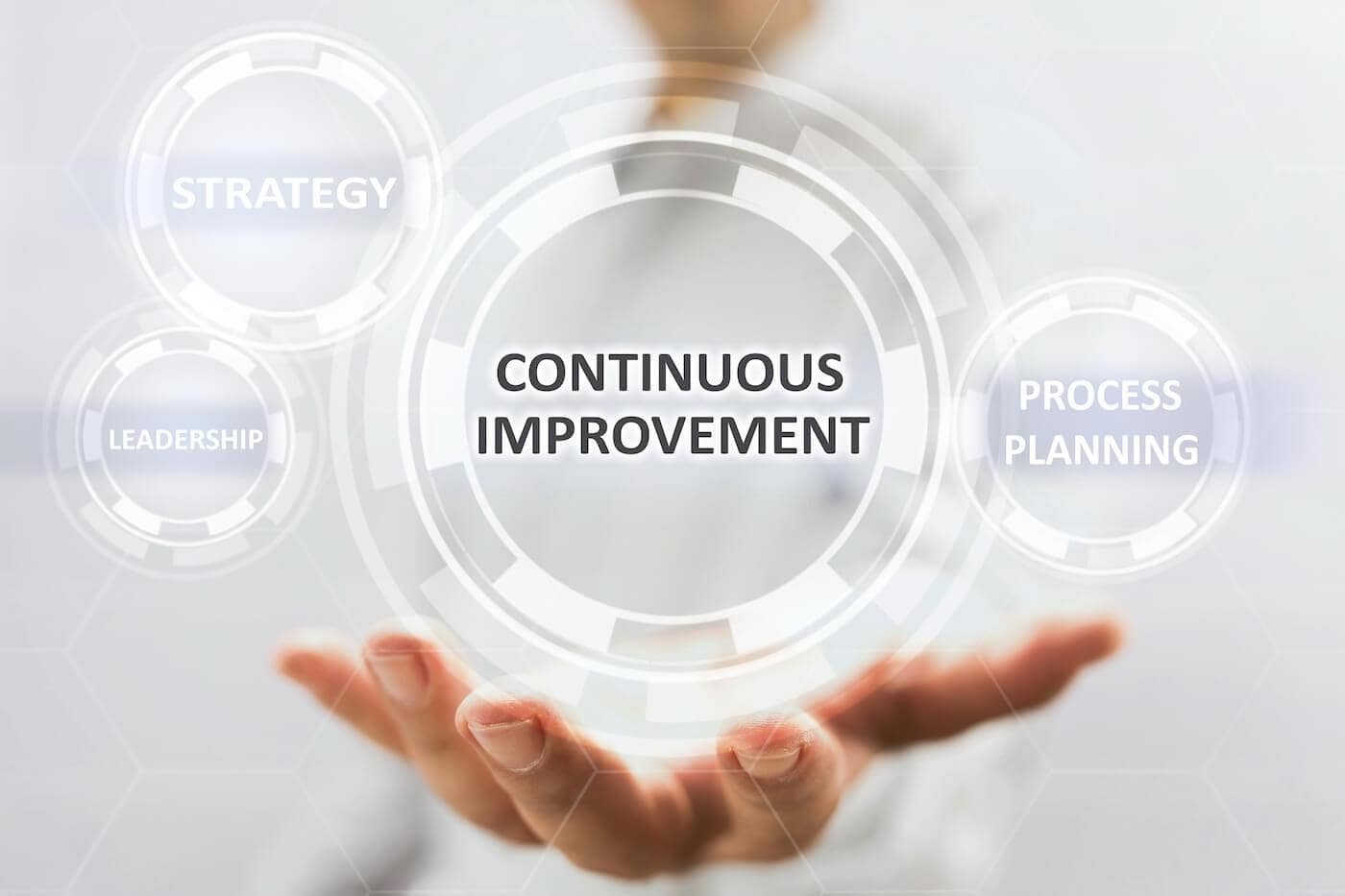What is Continuous Improvement?
Continuous improvement (CI) is a strategy that focuses on finding and implementing ways to improve your business processes.
CI can help you increase productivity, cut costs, and make your product or service more competitive.
CI works best when it is part of the company culture and involves everyone within the organization.
1. Identifying Problems
A successful Continuous improvement program requires a lot of planning and effort. The first step is identifying problems that need to be addressed.
One popular method for identifying improvement opportunities is Kaizen, which focuses on small changes to improve processes rather than larger ones. The kaizen methodology has its roots in the manufacturing industry, but it can be applied to other industries as well.
Another popular method is Six Sigma, which involves analyzing a process and identifying areas for improvement. This aims to reduce defects and increase quality, which leads to better customer satisfaction and a higher profit margin.
Other methods of identifying improvements include value stream mapping, which is a tool used to map how different stages in a process are performed. It helps identify areas for improvement so that people can work to streamline those processes and eliminate waste.
2. Developing Solutions
Continuous improvement is a process that focuses on making small improvements that add up to a big difference. It helps businesses identify ways to improve their processes, products, or services and achieve operational excellence.
It also helps organizations save money and meet customer expectations. It helps reduce waste and eliminate defects, which leads to higher quality products or services.
There are several different methods and tools that can be used to implement continuous improvement. Generally, they focus on iteration and flexibility.
One of the most commonly used methods is Plan-Do-Check-Act (PDCA). It provides a framework for testing ideas and hypotheses in a systematic way.
It also focuses on employee involvement, which is important in any continuous improvement program. It involves capturing people’s perspectives, removing barriers to communication and upskilling employees so that they have the skills they need.
3. Implementing Changes
The most successful companies are constantly looking for ways to improve their operations. This includes implementing changes that increase efficiency and reduce waste.
Continuous improvement can be done in a variety of ways, including Lean methodology and Six Sigma. Both of these methods involve a customer-focused approach that is designed to eliminate defects and streamline processes.
However, these approaches have their own specific challenges. In particular, they often take time to implement.
To keep continuous improvement going, it is essential to get everyone involved. This means involving the whole team in identifying problems and figuring out solutions.
4. Measuring Results
One of the most important aspects of continuous improvement is measuring your results. By measuring your progress, you can see if the changes you’ve made are working and make any necessary adjustments.
For example, if your business has a lot of defects in its processes, continuous improvement could help you eliminate these problems and improve the quality of your products. This can help you save money and improve the customer experience.
However, most organizations struggle to find a way to accurately measure their progress and show the impact of their efforts. This is why it’s so important to use a tech stack and tools that are specifically designed for measuring continuous improvement.
Another important element of continuous improvement is involving people in the process. Getting people involved will ensure that the changes you’re making are sustainable. This will also help you build a stronger team that is committed to the success of your company.
